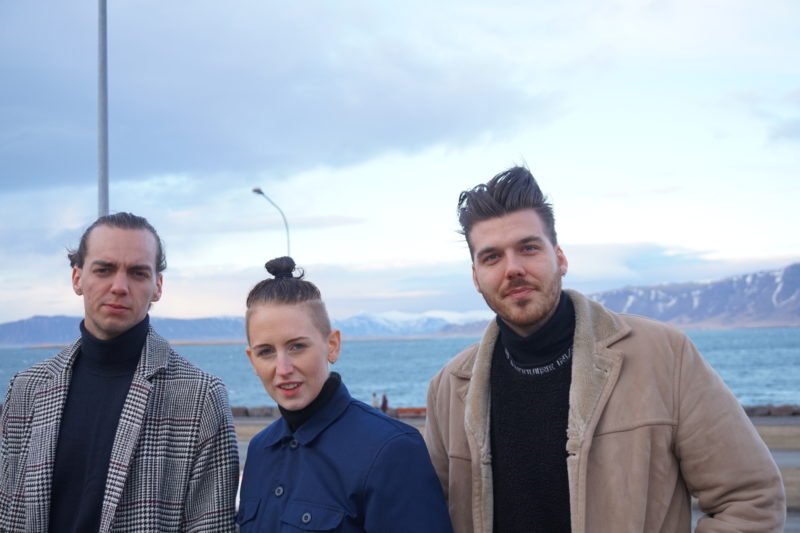It’s the end of a long Friday. After a day spent preparing for, and then performing on Icelandic television, VÖK are finally off the clock and grabbing a cocktail at Gamla bíó, a multi-purpose venue and former cinema (clue’s in the name) in Reykjavík that’s currently functioning as the band’s post show watering hole. Suddenly, their table has an invader. The world’s most excited girl has recognised them, and hops over to tell every member how much she loves the band. Their manager Gis turns to me and retells Björk’s anecdote about her return to Iceland after winning an Oscar, only to be asked by the taxi driver on the way back from the airport: ‘Why haven’t you called your grandfather recently?’. “You can’t be famous in Iceland,” he concludes. The country is a little too small for space to open up between musicians and their fans. You might see VÖK on TV, and the spot them a couple of hours later in the same bar, having a drink with a fly-in idiot journalist. They’re never too far away.
Right now, the band are in full-on busy mode. Their second album, In The Dark, is a week old, and in the gap of their European touring schedule they’re back in Iceland. Partially for a non-strictly-VÖK reason (the band’s Einar Hrafn Stefánsson also plays in Hatari, the act recently confirmed as Iceland’s 2019 Eurovision entry, so there’s plenty of press and heat around that for reasons you can google if you’re really that interested), and also to perform their single Spend The Love on Icelandic chat show Vikan með Gísla Marteini. After getting in from the airport I meet the band (Einar, along with singer Margrét Rán Magnúsdóttir and relatively new drummer Bergur Einar Dagbjartsson), and we get to work.
VÖK’s started to work on their new album around the corner of 2017 and 2018, when Margrét started shopping for producers to work with on the follow-up to their debut Figure: “I had sessions with eight producers over two weeks, and with James [Earp] it just clicked. I had a great time seeing how work flowed with all the different producers, but he was definitely the one that suited us. Basically, it was a compilation of old demos and new demos that were made over a couple of months as the ground work. And we started working on it in the studio in April 2018. Then we defined the demos, and took them to a place where we were happy to bring them to our producer James. I had done a writing session with him in December 2017, and I wrote Erase You with him”
Einar: Erase You was sort of the selling point for James.
Over a couple of months and some sweat in figuring out what they wanted the album to be, the band had In The Dark ready to go towards the end of 2018. ‘Scarcity was the one that was most difficult’ says Einar. ‘It was a difficult birth with that one. It took a really long time to nail that one, and it wasn’t until we went completely backwards, and started working on it from the ground up again that it clicked.’
Margrét: We had more live elements in it initially, but the song I think was meant to be a more electronic one.
Einar: We ended up doing too much for that song, and in the end it wasn’t what it needed. Sometimes it’s like that, you need to go somewhere with a song to realise you already had it an earlier point.
Bergur:It doesn’t need all the layers sometimes. In the end it’s similar with Erase You, there aren’t many elements, there’s bass, guitar, drums, one little synth up here and a lot of vocals. But it makes it more accessible, because there aren’t too many elements, but I think it works. It has a big soundscape for what it is.
Einar: Versus say, Spend The Love, which is really heavily layered. There are lot of things competing for space in that one. But I think we managed to make it all fit. We had a very fluid flow with James in his studio, we were able to try out a bunch of different things.
Striving for Pop
And what of the sound they worked out? What strikes you when listening to In The Dark is how immediate it is, compared to the subtle, softer groove of Figure. Here, the band has overcome their fear of big choruses – on In The Dark, those massive choruses leap out of the songs and demand the listener’s attention. “We were open to do something more immediate” says Margrét. “Figure was all about dancing around with things, but now we just want to slap you and say ‘here is our song. Here it is.”
Einar: More punchy.
Margrét: Einar mixed the album, so we were able to make sure it had our touch on it.
Einar: I think we were able to have the balance that we wanted. James is a wonderful producer, and he’s a pop producer, so he was able to draw a lot of pop elements out of the songs. Then we managed to smooth it as well, into a more VÖK sound.
Bergur: I have a little more of an outside perspective, because I only joined a year ago when they were recording the album. I didn’t really think about things like big choruses with this album until you said it, and it really makes sense. The melodies are more to the point. Here is the song, this is how it’s shaped, deal with it. (laughs)
Einar: We definitely strived to make a more poppy sounding record, without it being this direct aim.
Margrét: It was basically what we were feeling, that we wanted to do that. It was not forced in any way.
Bergur: A lot of people expected that we would keep the same soundscape as the last album.
Einar: But that album is already out there. It [the new music] has to have something new I think. Otherwise it would just get lost with all the old stuff, in my opinion. For me, I feel it was a good step.

Bergur Einar Dagbjartsson, Margrét Rán Magnúsdóttir and Einar Hrafn Stefánsson
Soundcheck calls for VÖK, and we head to the RÚV studios, Iceland’s national broadcaster. After they run through Spend The Love a couple of times and are satisfied everything sounds as it ought to, we depart the studios (via a brief pause to take photos with some stage equipment Einar recognises from one of his Hatari performances) and head out to get something to eat. This takes us to KEX, the former biscuit factory turned hostel/ restaurant/ bar/ venue, which will be familiar to anyone who’s watched any KEXP live sessions from Iceland Airwaves. We sit down in a section that’s usually the stage, as Einar points out, familiar to him from his work as a sound techie, while Margrét and Bergur debate whether or not they’re nervous before the TV performance (Margrét is, and Bergur, who has played on the show four times before in various bands, is not).

We get back to In The Dark, which draws a little inspiration from Margrét’s childhood fear of, well, the dark. She says of the opening title track: “This song is basically about getting over your fears. About stepping out of the dark. You tend to overthink things in your head, or I do anyway, and you get really scared of nothing. You just imagine things. I used being scared of the dark as a reference, as I was always afraid of the dark when I was younger. And a little bit now. (laughs) So it means ‘get your ass out there, there’s nothing to be afraid of'”.
In The Dark’s immediacy, the strength of its choruses, hides its lyrical depth. Upon first listen, I only really thought about how strong its melodies were. Left with the record for a few more days (and one long plane ride to Iceland), it dawned on me how raw and open-hearted the lyrics were, a dark journey through personal strife and growth. “I’ve never had such a bond with songs as I’ve had with the ones on this album,” says Margrét, “because they are as you said, quite personal, and most of the lyrics are from us and our personal stuff. I can really get into the lyrics when I’m performing them […] That was basically the concept with making the album quite light, sound wise, but with quite dark lyrics. People ask ‘why In The Dark?’, because it’s such a poppy, upbeat album, but it isn’t lyrically.”
Einar: It was easier to let our barriers to creating this [poppy] sort of music down, knowing that we weren’t writing songs about meaningless crap. We were writing about things that touched us, and personal experiences and all this stuff. It would have been different if we were writing about going to the supermarket or whatever.
“That’s the for next album”, says Bergur, and laughs.
The juxtaposition in the lyrics provides the inspiration for the title of the track Night And Day, the idea for which came from an unusual source. “This was quite an old song”, says Einar, “and we kind of adjusted it to an idea we had which was to make our own version of ‘Every Breathe You Take’ by The Police. If you look at the lyrics from the perspective of someone who’s stalking someone, they have these mad emotions for an individual, and those feelings are obviously not returned. And then there comes the mid-eight, the anxious part you mention, where they think ‘maybe what I’m doing isn’t right, and this person doesn’t want me at all’. And then back to the chorus, back to stalking again.” (laughs)
Bergur: None of us are stalkers by the way. (laughs)
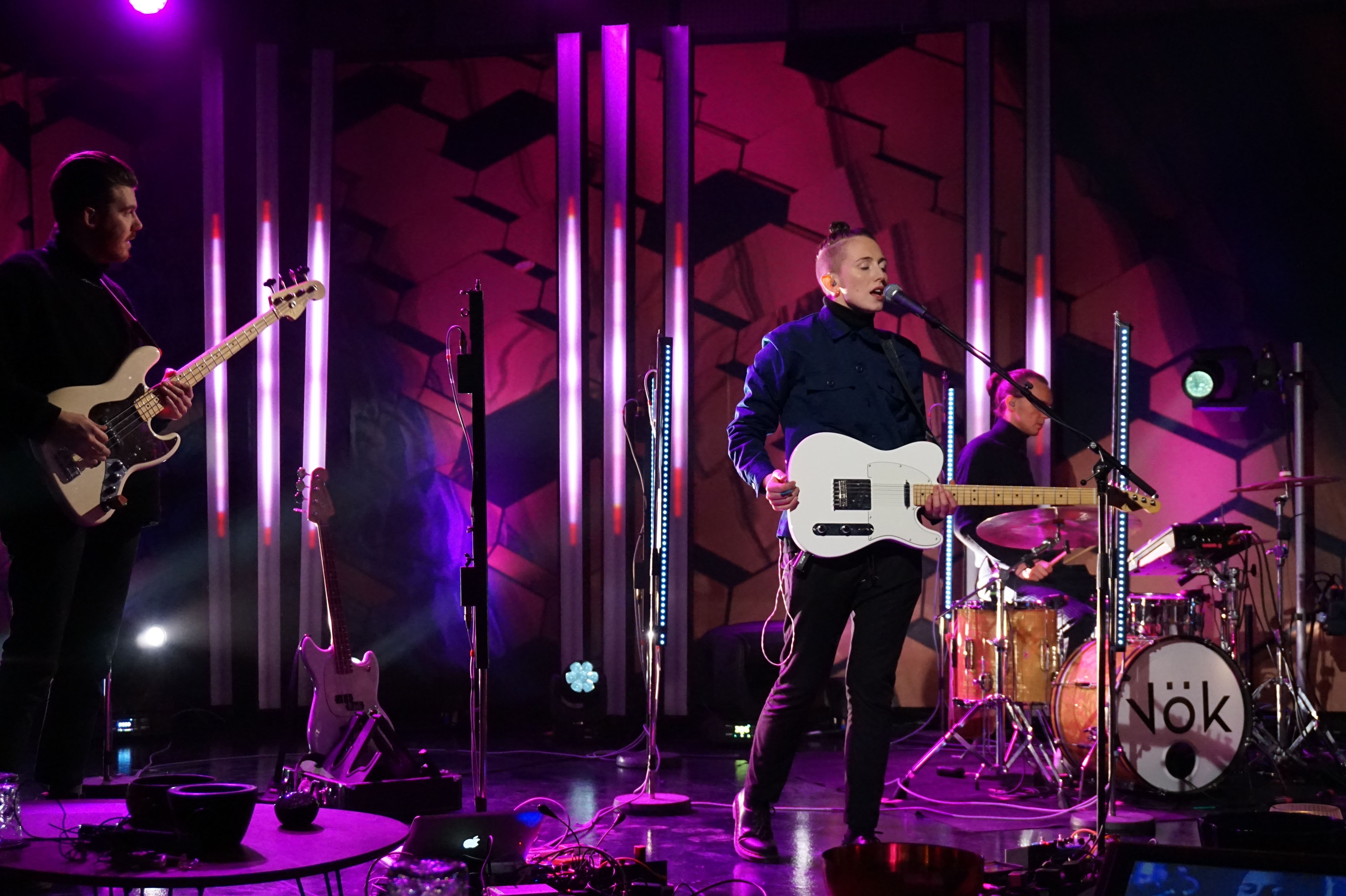
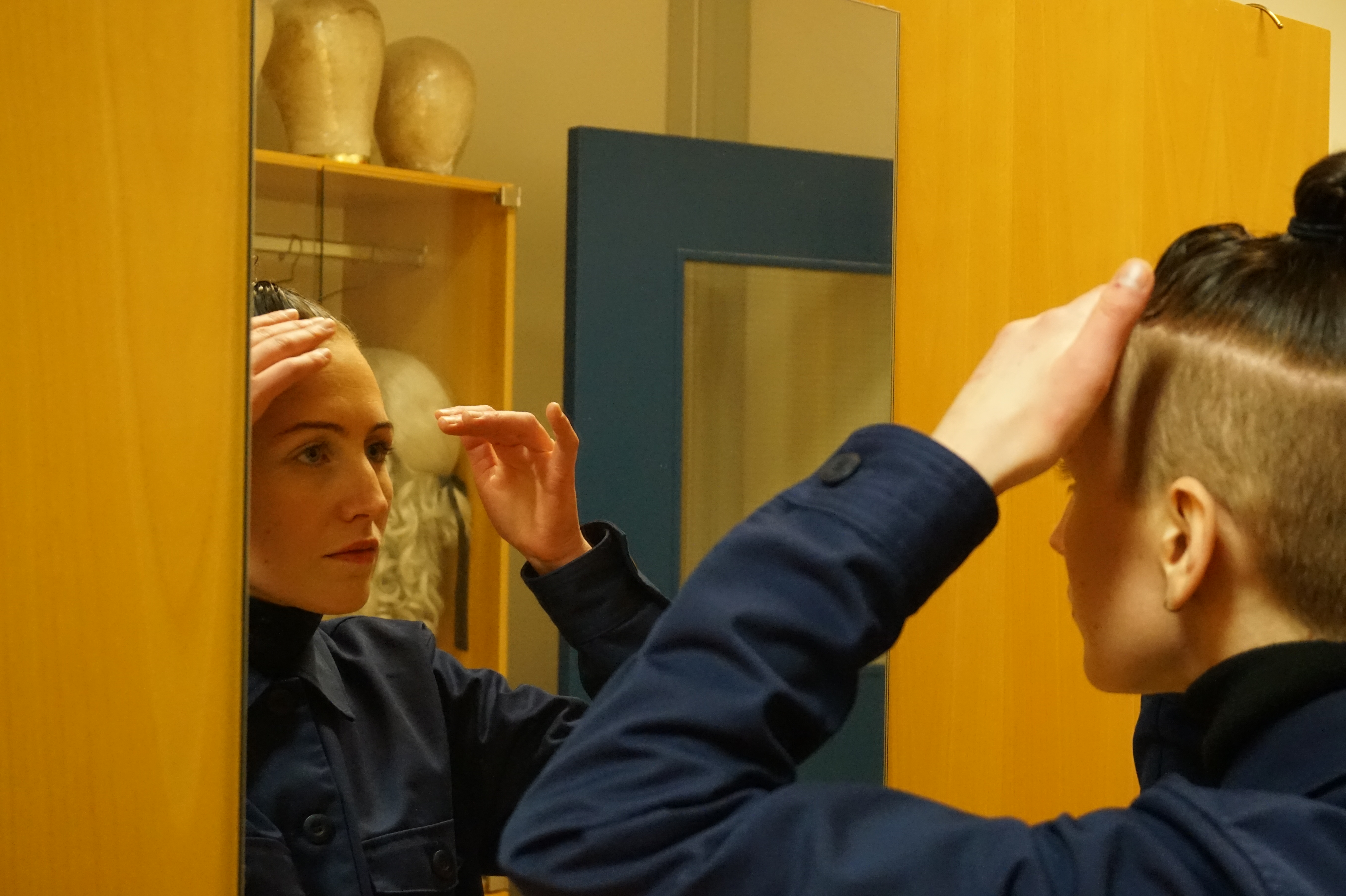
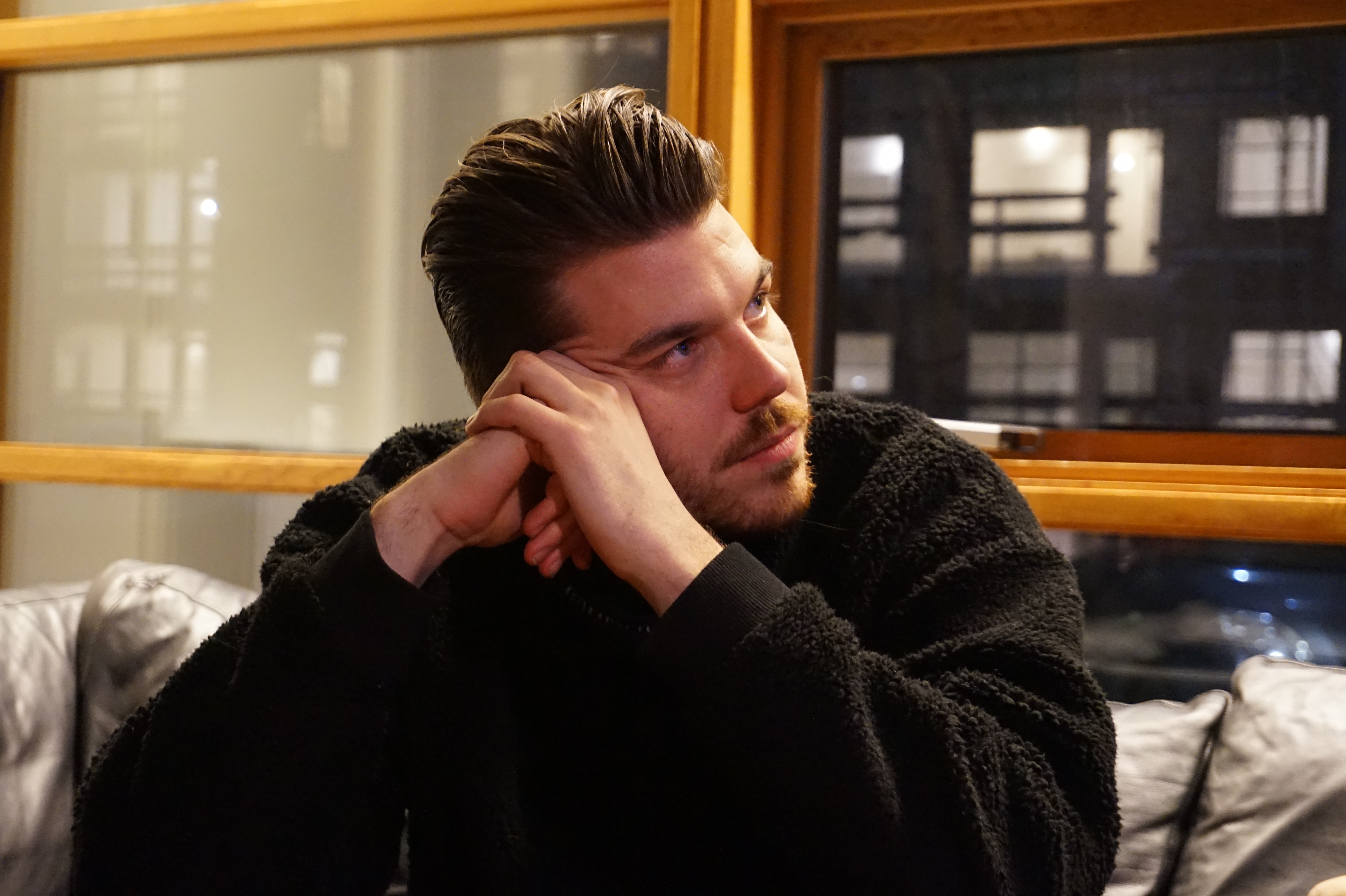
‘There has to be a contrast’
On single Spend The Love, another theme comes through. Margrét says “For me, it’s about this burning feeling of always needing something. Always wanting something to make you happy. But it’s never going to buy you happiness, because it doesn’t work that way. It brings you temporary happiness, it does, but it’s very empty. We really just wanted to write about that, something we and probably lots of people feel strongly about.”
Bergur: I think it’s a basic concept that everyone knows, but it’s good to put it out there, because everybody relates to it, everybody knows about it.
Einar: The original title was Spread The Love. It was a demo Margrét made that I totally fell in love with. When she showed me I was like ‘this is amazing’.
In The Dark isn’t just big ‘ol pop songs. The band have also taken the time to space and plan the record, with the softer slow middle tracks No Direction and Round Two allowing for a breath to be taken between the hits. Einar says “Round Two is the darkest song on the album. So the first half is very upbeat, you get a very single-heavy start, and you get these two songs that are quite dark, quite old-school VÖK. We thought it was a nice contrast, and made sense in the flow of things on the album.”
Bergur: You can’t have the same song eleven times, there has to be a contrast.
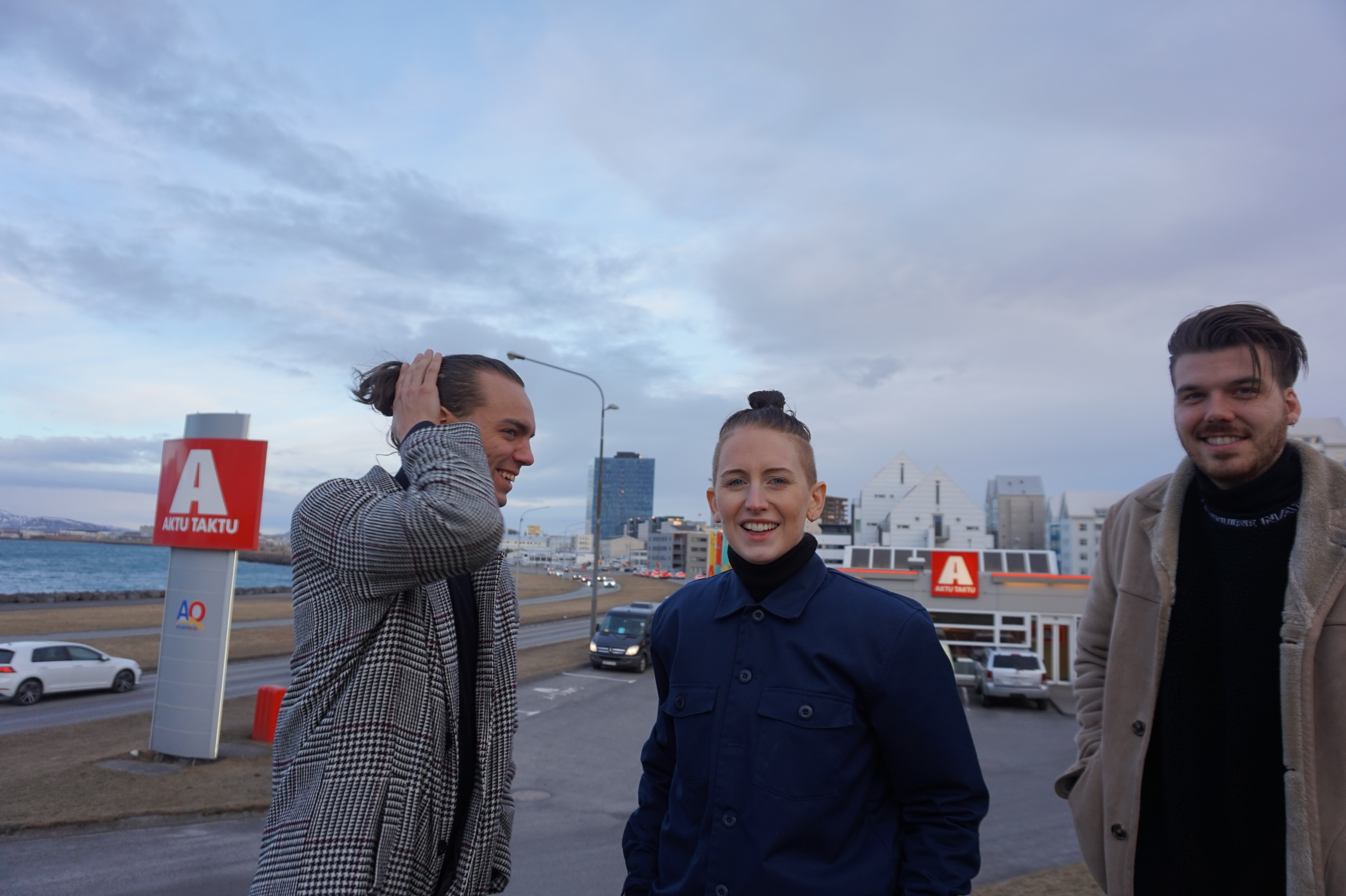
Then comes the sunset-inspired track Rooftop Views: “I love interlude songs on albums,” says Margrét, “and I wanted to have one”.
Bergur: When I came in, you went ‘let’s connect the songs with interludes’. And I just went ‘yeah, cool, we should do that’. That was the whole conversation. I remember you sent me Rooftop Views when we thought the album was ready, and it was amazing.
Margrét: I get quite obsessed with like afternoon pink skies. I usually call it sky porn. (laughs) So I wanted to make music that captures my rooftop views.
And then we wrap it all up with Out Of The Dark. So is that designed to be the cathartic song that ends the journey?
Margrét: Yes, basically. It’s supposed to slap you in the face and say ‘we’re out, we’re out of the dark now’.
Einar: It was kinda like ‘didn’t give a shit, we’re gonna make this weird song to end this album!’.
Bergur: I remember the first time I heard it was without the outro. And so I was like ‘this is nice’, and then they said ‘check this out’ and played the whole thing and I went ‘oh my god, this is amazing’.
Margrét: It’s the mic-drop of the album.
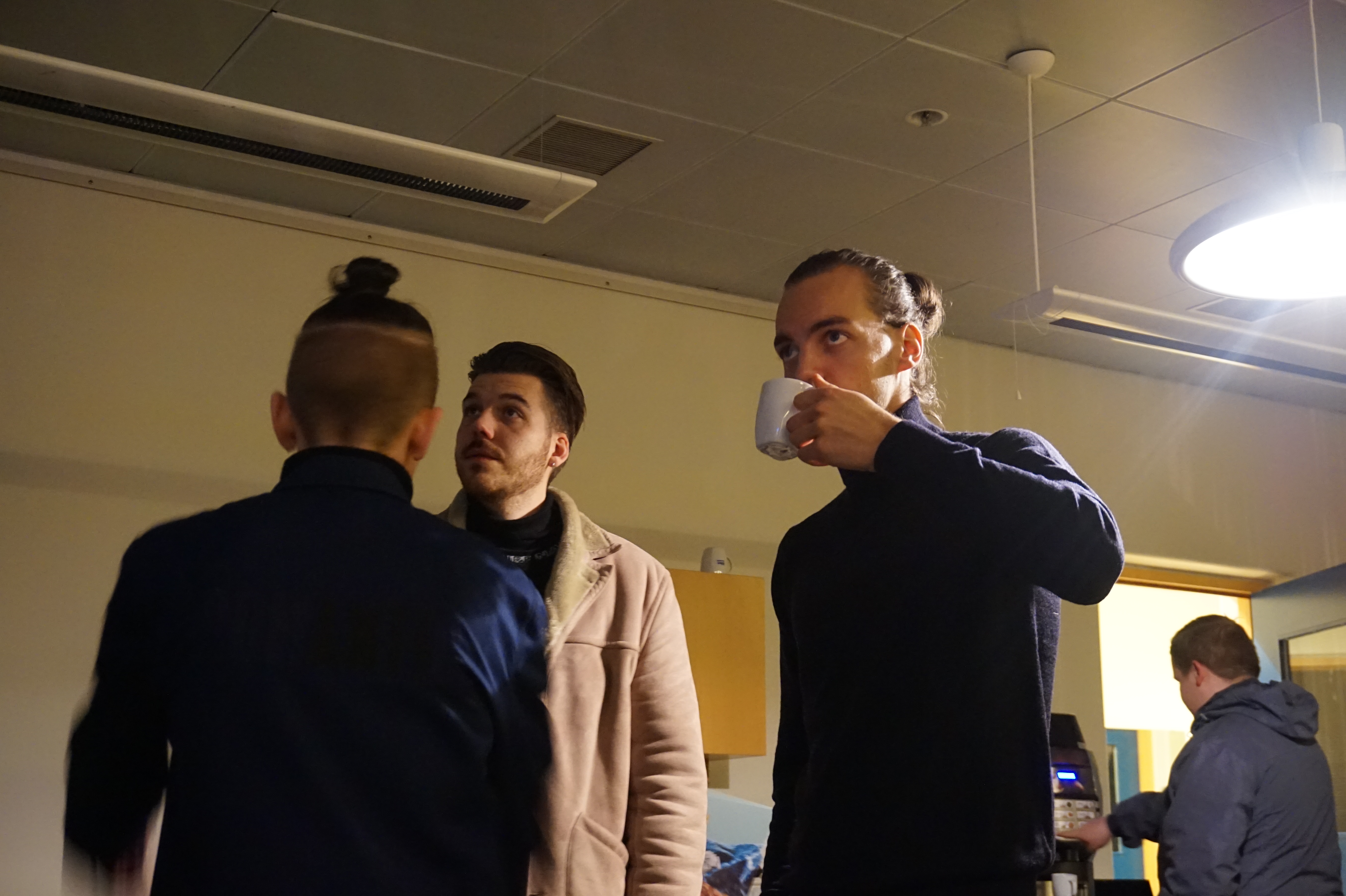


Post-KEX chat and photos, it’s back to RÚV for line-check, some hanging around and waiting in the green room, watching the episode of Vikan með Gísla Marteini progress (main topic of debate – Hatari and the Eurovision entry, which Einar does his best to ignore to keep his focus on VÖK’s performance). Then the trio wraps up the show by blasting flawlessly through Spend The Love. Later, on our way to the bar and their meeting with the world’s biggest VÖK fan, I ask them how In The Dark’s been going down on tour. “It’s been really fun,” says Margrét. “The gigs we have done so far have been quite successful, and the songs are so energetic and up-tempo. So it’s really fun to perform now. Before it was fun, but so much slower, so maybe harder for people to get into. Now I feel more energy from the crowd.”
Bergur: People are dancing now, people are not crying and depressed. (laughs)
Einar: I think people for the most part are enjoying this change. And I think it’s healthy to change, as an artist. It’s healthy to try new things.
Bergur: When you’ve already done something, why do it again? You can of course play old songs, and maybe play them in maybe the same way, but it has to contrast with something new also. I think both as an artist and as an act in general, you have to keep constantly bringing in new elements. Otherwise it’s just the same thing you know, it’s nice but it’s already online. For me at least, I like it when I see a band I love and they don’t play in the exact same way again. I want to see something new, or how they change.
VÖK’s In The Dark is out now on Nettwerk.
All photos by Austin Maloney
This article was made possible via the concept of ‘Smart Compensation‘ which allows to invest more time on specific editorial topics. Find out more about it in NBHAP’s Mediakit.
